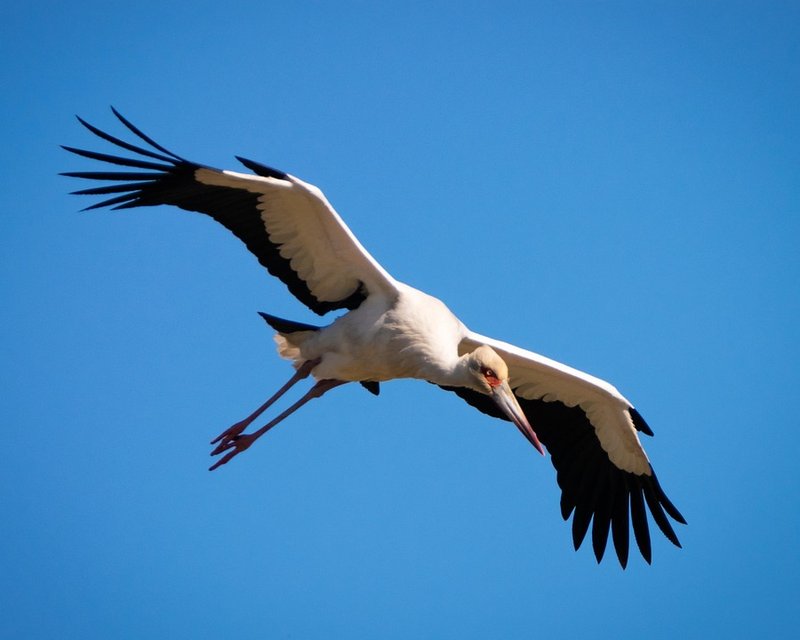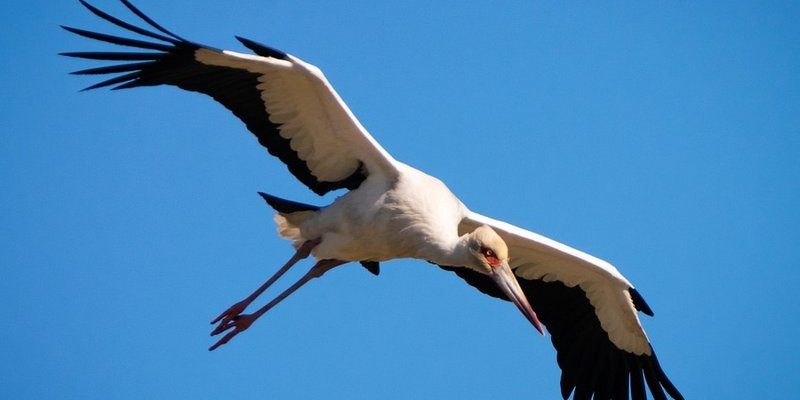
Storks are part of a family of wading birds, and they thrive in various environments, from wetlands to savannas. You might be wondering what sets them apart from other birds in terms of flying and hunting. Well, their adaptations are fascinating! Whether it’s their impressive wingspan or their hunting strategies, storks have mastered the art of flight and foraging in ways that keep them on top of the food chain. Let’s dive into these unique flying and hunting techniques that make storks so special.
The Anatomy of a Stork: Nature’s Masterpiece
To appreciate the flying and hunting techniques of storks, it helps to understand their anatomy. Storks have long legs, long necks, and large wings, which are crucial for their lifestyle. Their wingspan can reach up to six feet, giving them the ability to soar at great heights. This size isn’t just for show; it allows them to catch thermals—columns of rising warm air—soaring effortlessly without using much energy.
Their beaks are another fascinating feature. Long and pointed, these beaks are designed for probing the ground. They can quickly snap shut when they spot prey, which is usually small fish or amphibians. With this combination of features, storks can glide gracefully through the air and effectively hunt their next meal. The physics behind their flight is a spectacle, reflecting how nature has optimized their body for survival.
Wing Structure and Flight Mechanics
Storks use a unique flight technique known as “soaring.” This involves using updrafts, which help them gain altitude without flapping their wings constantly. Unlike many birds that rely heavily on flapping, storks can spend hours flying without much effort. Their broad wings create lift, allowing them to glide across great distances.
You may have seen storks flying solo, but they often take to the skies in groups. This is because they can save energy by flying in a V-formation, where each bird benefits from the updraft created by the one in front. It’s a beautiful example of teamwork in the animal kingdom! Observing storks flying together, you can really appreciate how their techniques keep them efficient and agile.
Hunting Strategies: The Stork’s Approach to Food
When it comes to hunting, storks are like skilled chefs. They have a variety of techniques to catch their food, depending on the environment. One common approach is to stand still and wait. Storks patiently stalk shallow waters, using their keen eyesight to spot fish, frogs, or insects lurking below the surface. This is a lot like fishing with a rod—you wait for the perfect moment to strike.
Once they spot their prey, storks will quickly jab their beaks into the water. Just like a chef wielding a knife, they’re efficient and precise. This technique allows them to catch fish with incredible accuracy, often catching their meals in one swift motion.
Adaptability in Different Environments
Storks are incredibly adaptable hunters. Depending on their habitat, they will modify their techniques to suit their surroundings. For example, when hunting in wetlands, they may use a different strategy than when foraging in open fields. In wetlands, they wade through water, using their beaks to sift through mud and shallow waters, creating a ripple that can scare fish into moving closer.
In contrast, in drier environments, storks may rely more on their vision and stealth. They can quietly stalk through tall grass or dry terrain, being ever so cautious to not alert their prey. This adaptability is a testament to their survival instincts, allowing them to thrive in many different habitats around the world.
The Role of Migration in Stork Survival
Migration is another fascinating aspect of stork life. Many stork species undertake long migratory journeys, sometimes traveling thousands of miles between their breeding and wintering grounds. This migration is vital for their survival, as it helps them find food and avoid harsh winter conditions.
During migration, storks rely heavily on their flying techniques. They use thermals to gain altitude, allowing them to cover vast distances without tiring easily. Just as long-distance runners pace themselves, storks are experts at conserving energy. Seeing them in migration is truly a breathtaking sight, often filling the skies with their impressive formations.
Challenges During Migration
Despite their impressive abilities, migration can be challenging for storks. Weather conditions, habitat loss, and human interference pose significant threats. Strong winds or storms can disrupt their travel, making it difficult to find safe resting spots. This is why conservation efforts are crucial to protect their habitats and ensure their migratory routes remain clear.
Storks often face tough decisions during migration. They must find the right balance between speed and safety, which can be a delicate dance in unpredictable environments. Their resilience through these challenges speaks volumes about their adaptability and strength as a species.
Conservation and the Future of Storks
As fascinating as storks are, they do face threats that can impact their populations. Habitat destruction due to urbanization, agriculture, and pollution poses significant challenges. Protecting their breeding and feeding grounds is essential to ensure these remarkable birds continue to thrive.
Conservationists are working hard to create safe habitats for storks. This includes restoring wetlands, protecting key migratory paths, and educating the public about the importance of these majestic birds. Awareness can help reduce human impact on their environments, making a huge difference in their populations.
By supporting local conservation efforts, we can contribute to the protection of storks and their habitats. After all, these birds are not just beautiful; they play a vital role in our ecosystems, helping maintain the balance of nature.
How You Can Help
You might be wondering what you can do to help. Here are a few simple actions that can make a difference:
- Support organizations that focus on wildlife conservation and habitat restoration.
- Educate others about the importance of storks and their habitats.
- Participate in local clean-up efforts to reduce pollution and protect wetlands.
Every small effort counts, and together, we can ensure that storks continue to thrive for generations to come.
Storks are extraordinary birds with unique flying and hunting techniques that captivate us. Their ability to soar gracefully, hunt with precision, and adapt to various environmental challenges showcases the wonders of nature. By understanding and appreciating their behaviors, we can foster a deeper connection to wildlife and the ecosystems they inhabit.
As we’ve explored, the life of a stork is full of fascinating adaptations and survival strategies. From their impressive migrations to their clever hunting techniques, storks remind us of nature’s ingenuity. Let’s celebrate these incredible creatures and work together to protect them, ensuring that future generations can enjoy their beauty and significance in our world.

